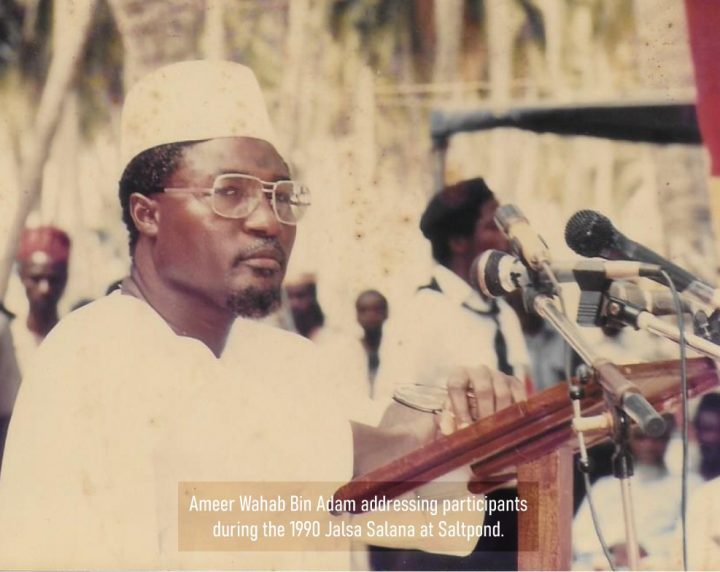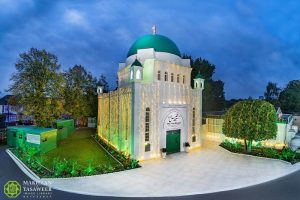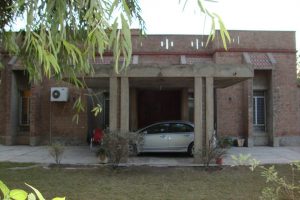
The Ahmadiyya Muslim Community was founded by Hazrat Mirza Ghulam Ahmad (as) in the remote village of Qadian in 1889. It was destined to reach all corners of the earth as was foretold by Allah: “I shall cause thy message to reach the corners of the earth”. One of these places was the West African nation of Ghana.
From its humble inception in 1921, the Ahmadiyya Community in Ghana has seen remarkable progress, from increasing membership to its contribution to education, health, peace efforts and humanitarian initiatives in the country. As we commemorate a century of progress, it becomes imperative to reflect on history; the stories of the selfless pioneer Ahmadis who planted the seeds of faith, and through several sacrifices and unwavering dedication laid the foundation of the Ahmadiyya Community in Ghana.
The history of Ahmadiyya in Ghana dates back to 1885, when a Methodist catechist priest Benjamin Sam from Egyaa converted to Islam and changed his name to “Binyameen Sam”. He subsequently persuaded Chief (Mahdi) Adoagyir Appah, a member of the royal family of Ekumfi Attakwa, to accept the teachings of Islam. Collaboratively, they spread the message of their newfound faith to their acquaintances and relatives.
As the congregation increased, their desire to learn and practise their newfound religion heightened. They travelled from far places to the residence of Binyameen Sam to pray and learn about the teachings of Islam. However, the challenging nature of their trips impelled them to take a unanimous decision to migrate from their various settlements and converge at a new settlement which became known as ‘Kurow fofor’ (i.e. “new town”), later named Ekrawfo. Binyameen Sam continued to lead the newly formed Muslim community until his demise in 1915, when the mantle of leadership passed on to Chief Mahdi Appah.
Their fervent desire to deepen their understanding of Islam led them to discover the existence of “Indian Muslims”, i.e. members of the Ahmadiyya Movement, who could assist them with deeper insights into their faith. The development was subsequent to Opanyin Yusuf Nyarko’s dream, where he saw the Fante Muslims in congregational salat with some “white Muslims”. This occurrence undeniably presented a fulfilment of Allah’s promise to the Promised Messiah (as):
“People upon whose hearts I shall convey my revelation will help you” [1]
Subsequently, they penned a letter to Qadian, leading to the dispatch of a missionary, Maulvi Abdul Rahim Nayyar, to the Gold Coast.
Inspired by the sacrifices of the companions of the Holy Prophet (peace be upon him) and Promised Messiah (as), they supported the voyage of the missionary by making a generous financial sacrifice of £300, a third of which was derived from the sale of the proceeds of Chief Mahdi Appah’s cocoa farm. This amount is approximately equivalent to £16,535.28 in purchasing power today.
Maulvi Nayyar arrived in Saltpond, Gold Coast on the 28th of February 1921, where he stayed for a few days. Six dedicated men from their small community, accompanied by Haleema Adjoa Nyansewa (daughter of Chief Mahdi Appah), carried the new missionary on a hammock from Saltpond to their settlement in Ekumfi Ekrawfo, approximately 20 miles road distance today but probably a much longer and more difficult route to ply in those days. Upon his arrival on March 3, Maulvi Nayyar convened a meeting with the Fante Muslims, where he informed them about the Ahmadiyya movement in Islam. On Friday March 11, the Fante Muslims took bai’at (oath of allegiance) and officially joined the fold of the Imam Mahdi (as). The new Ahmadis continued to make sacrifices to ensure the sustenance of Maulvi Nayyar and the succeeding missionaries deployed to the Gold Coast.
The new Ahmadiyya Community built a small mosque which was later redesigned and expanded (1950 – 1952) at a cost of £5,000. This became the first Ahmadi Mosque in the Gold Coast. They also established the Ekrawfo Ahmadiyya Cemetery, which is believed to be the first Muslim cemetery in the Fanteland, currently the memorial Ahmadiyya Muslim Cemetery for Ghana.[2]
Binyameen Easah Keelson, a nephew of Chief Mahdi Appah was a notable pioneer Ahmadi who played a significant role in the success of Maulvi Nayyar. Prior to his conversion, he was a successful clerk for a British firm. However, he quit his job and devoted himself to the Jama’at. Binyameen served as the first interpreter to the missionary, then as the first General Secretary in 1922, and finally as the first President, assuming administrative authority of the Ahmadiyya Community in the Gold Coast. He is also credited with the establishment of Ahmadiyya in Akim Oda, Eastern Region.
Another stalwart pioneer Ahmadi, Jamal S. Johnston, relinquished his job as a manager of a British store upon embracing Ahmadiyya and worked for the Jama’at. He dedicated himself to preaching the message of Islam Ahmadiyya to several Christian elites, many of whom he convinced to join the community. He also served as the manager of the schools which were later established by the Jama’at and succeeded Binyameen Easah Keelson as General Secretary in 1937.[3]
Haleema Adjoa Nyansewa and Aleesah Esi Esuon (wife of Binyameen Easah Keelson) were amongst the few women who were instrumental in the nascent days of the Ahmadiyya community. They were involved in Tabligh activities and were actively engaged in organising the female members of the Jama’at.[2]
Mallam Bin Salih of Wala origin, accepted Ahmadiyya at the hands of Maulvi Ali (third missionary deployed to the Gold Coast) and converted the Wala migrant community in Amumso, in the Ashanti Region, where he lived. He subsequently travelled to Wa in the Upper West region, to propagate the message of the Promised Messiah (as). His family and other early converts were persecuted in a bloody conflict. Nonetheless, they persevered and established an Ahmadiyya Community in Wa. They also succeeded in spreading Ahmadiyya to the Northeastern territories.
Other important pioneer Ahmadis include Nana Sadiq; credited with the establishment of Ahmadiyya in the Ashanti region, D.A Mahama and M.A Ishaque; who were instrumental in establishing Ahmadiyya in Tamale and its outskirts.[3]
By the grace of Allah, these early Ahmadis wielded the powerful weapons of unwavering faith, selflessness and spirituality. Their commitment and dedication can be compared to the fervour and devotion exhibited by the companions of the Holy Prophet Muhammad (peace be upon him) during the early days of Islam. They were steadfast and relentless despite the adversities they faced; their resilience laid the foundation for the thriving community we have today.
A century of progress for Ghana’s Jama’at is more than enough to demonstrate the promise of Allah in the Holy Quran, “or dost thou ask of them any reward? But the reward of thy Lord is best; and he is the Best of providers” (23:73)
About the author: Mateenah Aba Yamoah Keelson is student at the University of Ghana, pursuing a bachelor’s degree in Geography and Linguistics.
Endnotes
[1] Tadhkirah (3rd Edition), pg. 498.
[2] Keelson, H. (2003). Early History of Ahmadiyya in Ghana.
[3] Hanson, J.H. (2017). The Ahmadiyya in The Gold Coast: Muslim Cosmopolitans in the British Empire. Bloomington, Indiana: Indiana University Press.




Add Comment